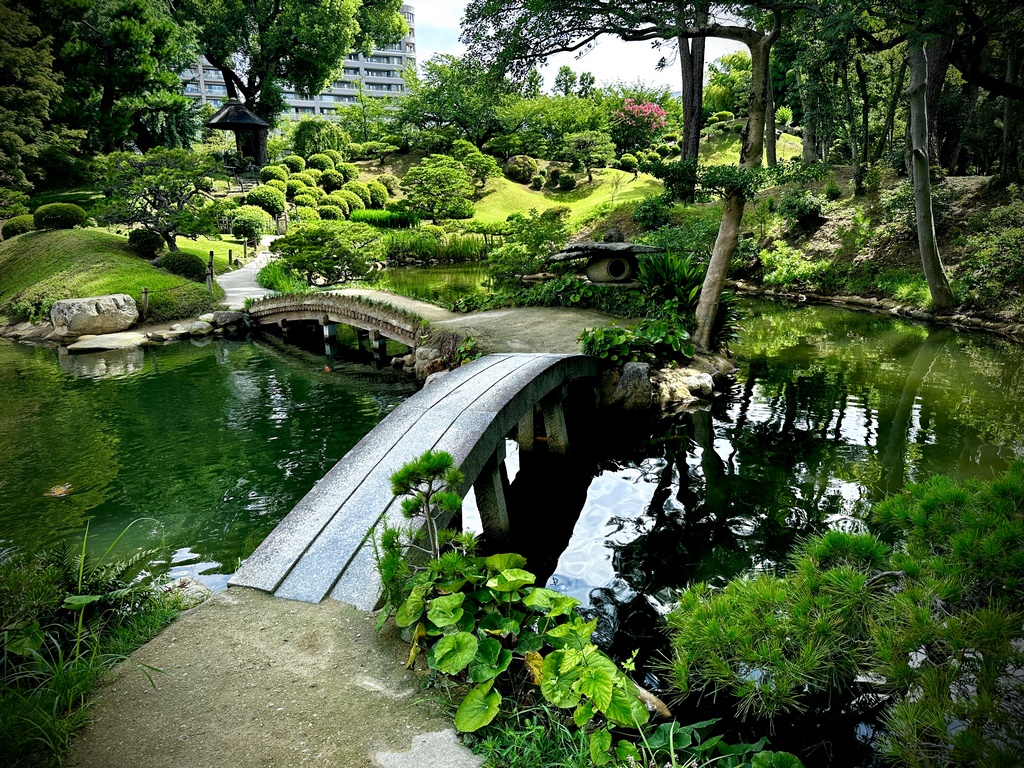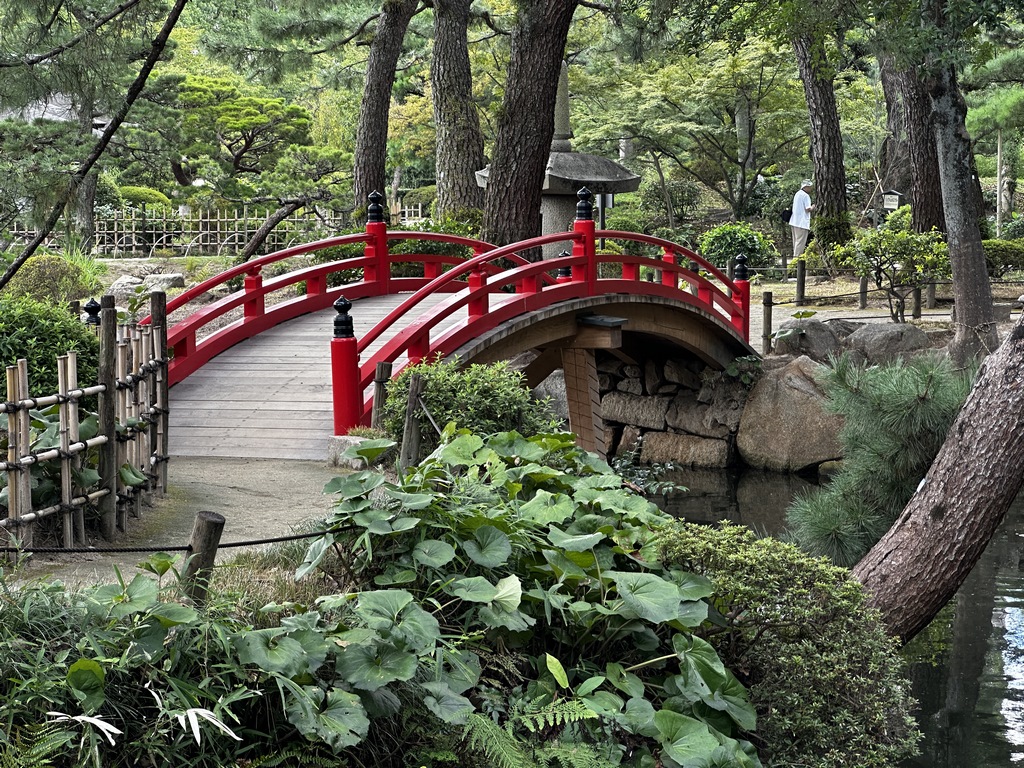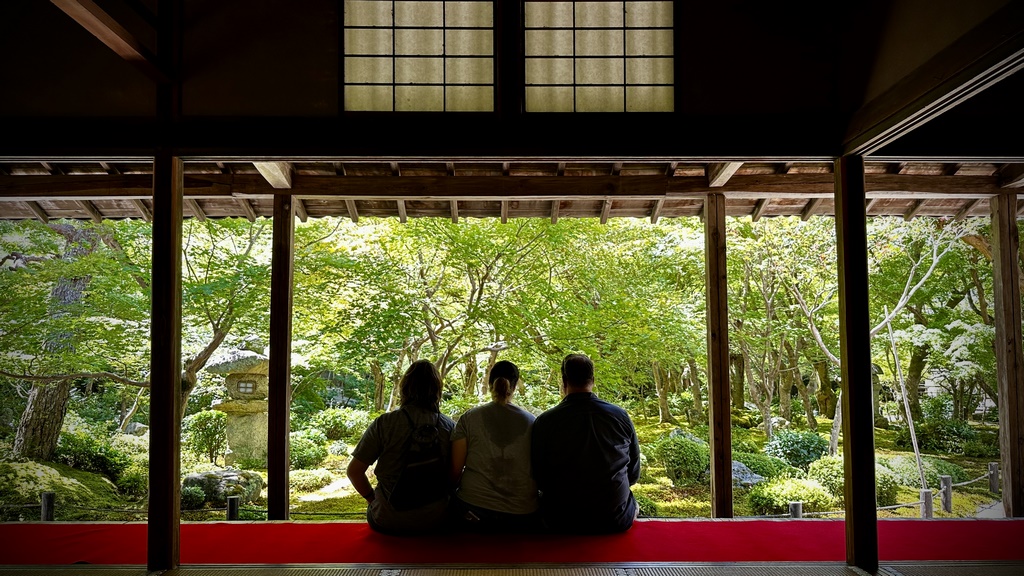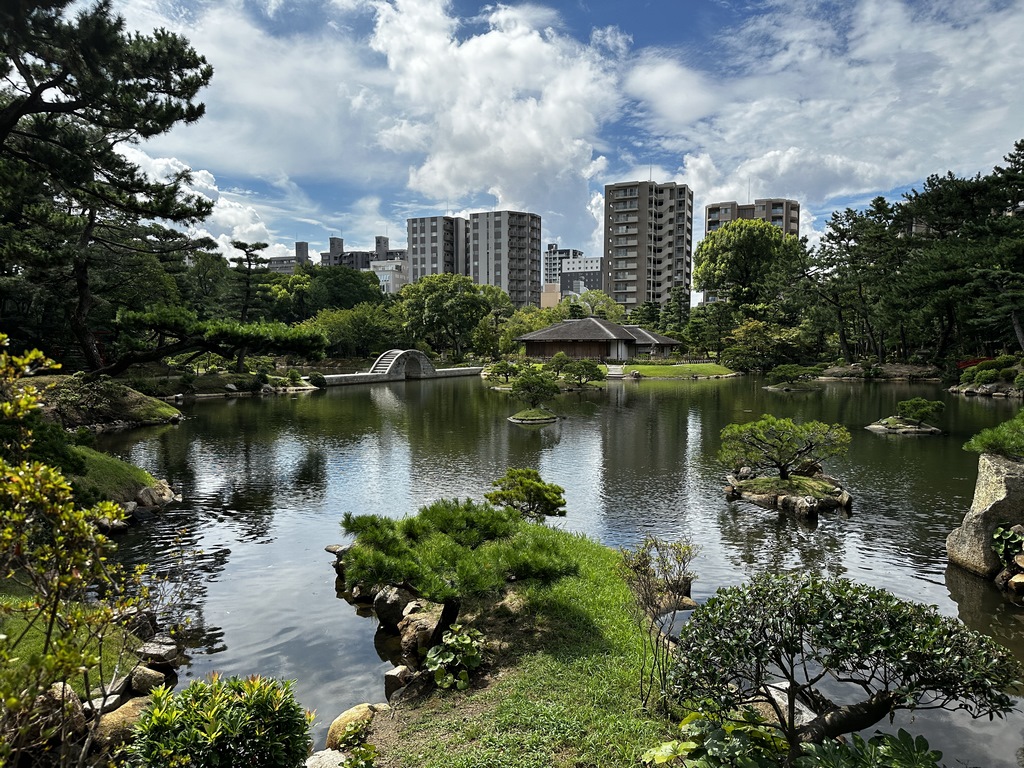Eastern Horizons (How Watershape Design Benefits from Japanese Garden Principles)


It’s one of history’s most influential design traditions. Japanese gardens are much more than pagodas, lanterns and Bonsai trees, says Jason Brownlee. Studying these timeless gardens that are so artfully inspired by nature is, he says, one of the best ways to elevate watershape and landscape design of almost all types.
By Jason Brownlee
Whether we realize it or not, a majority of the modern design styles we create today are based on the timeless principles perfected within the Japanese Garden. It’s a timeless design tradition that continues to captivate and inspire people around the world, and serves as an inspiration and model for designers working in the landscape.
Rooted in cultural and philosophical traditions, these gardens are more than just landscapes—they are living expressions of harmony, balance, and a deep connection to nature. Whether wandering through strolling gardens, meditating in Zen gardens, or participating in a tea ceremony in a tea garden, the experience of a Japanese garden transcends the visual, offering a profound and even spiritual journey through the essence of nature and culture.
From a designer’s perspective, Japanese gardens have served as inspiration and influence for some of the world’s greatest practitioners. It is a set of principles and methodology that transcends time and culture.
I have taken two extended trips to Japan (August 2023 and Jan 2024), visiting some of the most historic and beautiful existing Japanese gardens. Both were trips I had been anticipating for years as I have long deeply admired the design tradition, and especially what it can teach us about creating spaces for human occupation.
The most significant/memorable of these sojourns were Ginkaku-Ji (Silver Pavilion in Kyoto), Daitoku-Ji Zen Garden (with all of her Zen sub-temple gardens inside, including Ryoan-ji, also in Kyoto), Sengan-en in Kagoshima (with its spectacular smoking volcano borrowed scenery), and Sueikkan, a city stroll garden spared from extensive bomb damage in the city of Hiroshima.
Although I did spend significant time lingering at these and other locations, it was not nearly enough. The details and nuances are endless. Studying Japanese gardens is the kind of pursuit that can last a lifetime.
BROAD PERSPECTIVES
When most of us in the west think about Japanese gardens, we’re often likely seeing it through the familiar cultural lens with iconic images of pagodas, lanterns and Geishas crossing arched bridges over ponds filled with koi fish and waterlilies. Beautiful though those tropes may be, there is much, much more to understanding this valuable design tradition.
In the U.S., it’s generally fair to say that our own design traditions have historically been predominately influenced by western European culture. From pure classicism of the Greeks and Romans, to the periods of the Renaissance, the disciplined gardens of Europe have defined centuries of landscape design. Places like Villa d’ Este in Italy or the Alhambra in Spain, or the Palace of Versailles in France have echoed through generations of designers.
While there are vast differences and nuances among the Western design traditions, one unifying theme is mastery over nature. The English box garden, for example, is a literal representation of applying geometric discipline to plants. The radial geometry of formal gardens, the use of axial views, all of it imposes our desire for order on the natural world.
The European Renaissance was highlighted by intricately detailed works of art and sculpture by master artisans such as DaVinci and Michaelangelo. In contrast, during the Edo Period in Japan — the Japanese Renaissance — paintings were monochromatic simplistic expressions and sculptures were symbolic. Their true art was expressed in the permanent, ever-changing living form of the Japanese garden.
And therein lies the key difference: where western design seeks to perfect the landscape into architectural modalities, the Japanese philosophy of Wabi-Sabi celebrates the beauty of imperfection. In terms of landscape design, that manifests in an intuitive appreciation of ephemeral beauty of nature.
There’s a humility within Japanese gardening that is steeped in its representation of the natural world. While we can never truly replicate or master nature, at the same time, we are elevated by its influence and inspiration. In this way, Japanese gardens encourage us to think differently through our eyes and hearts, rather than our mind’s desire for order.
ENDURING PRINCIPLES
The big ideas underpinning Japanese garden design can be applied to almost any setting or design modality. They are, in a very true sense, universal.
Asymmetrical balance (Fukinsei) unifies all forms of Japanese gardening. Achieving equilibrium in a Japanese garden involves a careful distribution of elements such as rocks, plants, and water. This balance is not symmetrical but seeks to create a harmonious composition that feels right. This balance is often expressed through an emphasis on foreground, mid-ground, and background (often using borrowed scenery).
Texture (Tekusucha) plays a key role in all types of Japanese gardens. For my part, I cannot say enough about the importance of texture. It is the binding element that keeps your brain locked into the details, which is why I believe texture is the most important design element.
In this context, the concept doesn’t necessarily only refer to tactile texture, but mostly visual texture. As designers, we can use texture to express depth, perspective, variety and movement.
Harmony (Wa) is central to Japanese garden design, both in the arrangement of elements and in the overall atmosphere. The goal is to create a balanced and tranquil environment that resonates with nature.
Simplicity (Kanso) is another fundamental principle in Japanese aesthetics. A minimalist approach encourages the elimination of unnecessary elements, focusing on the essential to create a sense of tranquility and clarity.
Naturalness (Shizen) is the quality of celebrating nature, rather than mimicking it. Japanese gardens strive to represent and enhance the beauty of the natural world. This involves the use of natural materials, irregular shapes, and the incorporation of existing landscape features.
Subtlety (Yugen) in the context of Japanese garden refers to the suggestion of profound beauty rather than its explicit expression. Japanese gardens often evoke a sense of mystery, inviting visitors to explore and discover the subtle nuances within the space.
DESIGN ELEMENTS
Water (Mizu) in the form of ponds, streams, and waterfalls, play a crucial role in Japanese gardens. Water symbolizes purity, life, and continuity. The sound of flowing water contributes to the overall serenity of the space. The reflections in still water amplify the forms and textures of surrounding stone and plant material.
Rocks and stones (Ishi) are carefully placed to represent mountains or islands, creating a sense of permanence and stability. Stones may also be arranged in gravel, known as karesansui or dry landscape gardens, where raked patterns simulate water or waves.
Plants (Shokobutsu) are front and center in Japanese garden design. Evergreen trees, moss, bamboo, and flowering plants are chosen for their seasonal variations, colors, and textures. Cherry blossoms hold particular cultural importance, symbolizing the fleeting nature of beauty. Pruning is a high art in Japanese design tradition, treating plant material as living sculpture that is constantly being guided and nurtured.
Paths and bridges (Hashi and Michi) are carefully integrated to guide visitors through the garden. Arched bridges symbolize transitions and are often placed over streams, ponds or dry riverbeds, enhancing the sense of journey and exploration.
Tea Houses and lanterns (Chashitsu and Tōrō): Tea houses, often accompanied by a tea garden, are integral to Japanese garden design. Lanterns, both stone and metal, add an atmospheric element, particularly when illuminated in the evening. These structures contribute to the spiritual and cultural aspects of the garden.
GARDEN TYPES
Japanese gardens differ based largely on their intended use. Each garden type has its own purpose and design traditions.
Stoling gardens (Kaiyū-shiki-teien) are designed for leisurely walks, offering changing vistas and perspectives as visitors move through the space. Famous examples include Kenrokuen in Kanazawa and Katsura Imperial Villa in Kyoto where the experience of moving through the space is sometimes described as what it would be like to walk into a beautiful painting.
Dry gardens (Karesansui), also known as Zen gardens, are minimalist gardens consisting mainly of rocks, gravel, and moss. Raked patterns in the gravel represent water or waves. Ryoan-ji in Kyoto is one of the most famous examples.
Tea gardens (Chaniwa) are an integral part of the traditional Japanese tea ceremony. They often feature simple, rustic elements and are designed to enhance the spiritual experience of the tea ceremony. The Meian-ji Temple in Kyoto exemplifies this simple, yet inspiring style.
CULTURAL SIGNIFICANCE
Japanese gardens are not merely aesthetic spaces; they reflect profound cultural and philosophical values. The integration of Shinto and Buddhist beliefs, along with influences from Chinese gardening traditions, has resulted in gardens that serve as microcosms of the natural world and spaces for spiritual contemplation.
The changing seasons play a crucial role in Japanese culture, and this is reflected in garden design. Cherry blossoms symbolize spring, while fiery maple leaves represent autumn. The careful selection of plants ensures that the garden is a living canvas that evolves with the seasons.
Finally, each element in a Japanese garden carries symbolic meaning. For example, a stone lantern may represent the illumination of one’s spiritual journey, while a carefully placed rock may symbolize a mountain or a metaphorical obstacle to be overcome. In this way, the garden becomes a natural allegory, telling the story of time and change.
All of this is why, as designers of outdoor spaces, especially those that include water, studying Japanese gardens is path paved with riches that can only be found as we explore our relationship with the natural world.
Jason Brownlee owner of J. Brownlee Design, a firm specializing in custom and creative outdoor living projects for residential and resort environments. He serves as the principal designer and works collaboratively with both homeowners and contractors across the country to develop a complete outdoor lifestyle design for his clients.
Opening photo: Shukukein Garden, Hiroshima













